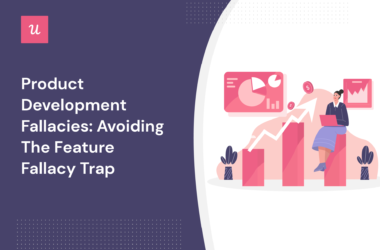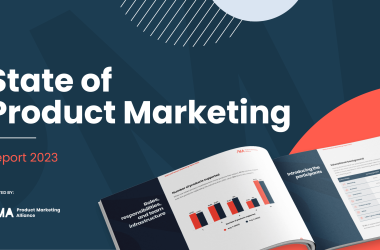Product-led growth (PLG) is all about crafting a product that practically sells itself. Picture this: a product packed with fantastic features, easy to use, offering clear benefits, and so engaging that users can’t help but stick around and spread the word. PLG businesses thrive on the idea that their product is so irresistible that customers flock to it without needing the push of traditional marketing or sales efforts.
The heart of PLG lies in giving users a taste of what your product can do before they commit to buying. It’s about creating an experience that hooks them in and keeps them coming back for more. With PLG, the product itself becomes the star of the show, driving both customer acquisition and retention.
Why the sudden surge in popularity for PLG?
Well, it’s partly thanks to the freemium model, where users get a taste of the product for free before deciding to upgrade. This approach, coupled with savvy SaaS companies leveraging viral loops, where users refer others, has created a self-sustaining cycle of growth. By focusing on delivering value and encouraging users to spread the word, PLG is proving to be a game-changer, leaving traditional marketing and sales strategies in the dust.
In this article, I will run through how you can drive growth through a product-led referral program, focusing on:
- The role of referral programs in PLG
- A step-by-step guide to building your referral program
- Advanced strategies for maximizing referral impact
- Final thoughts
The role of referral programs in PLG
Referral programs are like the secret sauce in a product-led growth strategy. They take your existing users and turn them into your best salespeople. By giving them incentives to spread the word about your product, you create a ripple effect that brings in new customers and grows your user base.
What’s so great about referrals is that they tap into the power of word-of-mouth marketing. People trust recommendations from their friends and family more than any flashy ad. So when your users start singing your product’s praises to their circle, you build trust and credibility without even lifting a finger.
And here’s the best part: referral programs are often a cost-effective way to grow. Instead of pouring money into ads or cold outreach, incentivizing referrals can be a smart and efficient way to attract new customers and keep that growth engine chugging along.
Through coursework, case studies, and exams, you’ll learn to solve real-world problems and set yourself apart. Ready to be the driving force behind your company’s product-led growth motion?
Step-by-step guide to building your referral program
Creating a referral program that really works takes some careful steps. Here’s a guide to help you get started:
Step one: Setting clear objectives for your referral program
Before diving into the core of building a referral program, it’s crucial to set clear objectives.
Set realistic goals: Take into account your customers, why they care about your product, and your growth strategy when setting goals for your referral program. Make sure they’re achievable and aligned with your broader business objectives.
Establish key metrics: Determine the specific metrics you’ll use to measure how well your referral program is performing. These could include things like referral conversion rates, customer acquisition costs, or the number of referrals per user.
Define your North Star: This is the primary metric that reflects the core value of your product and aligns with your overall vision. For your referral program, it could be the number of new customers acquired or the increase in customer lifetime value. This metric will be your guiding light, helping you understand the impact of your referral program on your business goals.
Step two: Designing a user-friendly referral process
Making it simple for users to refer friends is critical to drumming up more referrals. Here’s how to do it:
Share the love on social media: Let users easily share their referral links on social platforms. By adding social media sharing buttons, you make it easy and quick for them to spread the word about your program with just a click.
Smooth out the bumps: Get rid of any unnecessary hoops for users to jump through. The easier it is for them to join in, the more likely they’ll be to spread the word.
Make it user-friendly: Craft a referral process that’s easy to understand and follow. Smooth out any rough patches to ensure users have a hassle-free experience.
Step three: Incentivizing referrals effectively
Encouraging referrals with the right incentives is key to getting users on board.
Shout about the benefits: Spread the word on why joining the referral program is a win-win. The clearer the benefits, the more likely folks will jump on board and start spreading the word. Consider a dual side incentive, which is where both the referrer and new users get something. One example is giving a monetary incentive to the referrer and a month-free trial to the referee.
Set the rules: Make sure everyone knows what counts as a referral and how and when rewards are earned. For example, will you provide an incentive for a meeting or conversion? Clarity keeps things fair for both referrers and new users.
Tempting rewards: Offer incentives that really appeal to your audience, like discounts, exclusive perks, or trial periods. Keep in mind that certain companies have restrictions on monetary or financial incentives. Donating to a charity of choice is a great way to offer incentives to an audience with incentive restrictions.
Step four: Promoting your referral program
Spreading the word about your referral program is vital in getting folks involved. Consider the following strategies:
Tap your customer success team: Who is closest to your current customers than your customer success team? Tap into your CSM and ask them to share the referral program with their favorite accounts and customers.
Content is king: Cook up content marketing strategies showcasing your product’s value and why being part of the referral program is smart. Show, don’t just tell, why it’s worth their while.
Email it out: Craft email campaigns that sing the praises of your referral program. Show users the perks and nudge them to jump on board.
Social media savvy: Tap into social media like Instagram, LinkedIn, or Facebook to spread the word about your referral program far and wide. Engage with users, widen your reach, and get them excited to join in.
Step five: Measuring and analyzing referral program performance
Keeping tabs on how your referral program is doing is key to making it even better and keeping that growth going strong.
| Metric | Description |
|---|---|
| Number of referrals | The overall number of referrals in a previously specified time frame or channel. |
| Conversion rate | The portion of referrals that turn into actual customers. |
| Customer retention rate | The percentage of referred new users who stick around. |
| Lifetime value | The value of customers acquired through referrals. |
Advanced strategies for maximizing referral impact
To really supercharge a product-led referral program, businesses can deploy some advanced strategies. Here’s a couple to consider:
Personalized referrals through audience segmentation
Tailoring referral programs to specific customer segments can be a game-changer. Businesses can boost engagement and conversions by understanding different customer groups and customizing referral campaigns to match their preferences.
This involves diving into customer data, doing some market research, and rolling out referral campaigns that hit home for each segment. When users feel like the referral program speaks directly to them, they’re more likely to spread the word and drive growth among their peers.
Referral campaign optimization with A/B testing
A/B testing is a smart move for fine-tuning referral campaigns. By experimenting with different program versions, businesses can pinpoint what works best and optimize their campaigns accordingly.
Tracking metrics like referral conversion rates, customer acquisition, and retention allows a clear view of which variations are hitting the mark. With continuous testing and optimization, businesses can ensure their referral programs are firing on all cylinders, driving sustainable growth.
Final thoughts
To sum it up, a finely tuned product-led referral program can take your business to the next level. By making it easy for users to refer others and offering incentives that hit the mark, you can foster organic growth and bring in new customers.
Don’t forget to keep an eye on performance metrics and tweak your strategy as needed based on what the data tells you. And if you’re looking to take things up a notch, consider diving into advanced tactics like audience segmentation and A/B testing to fine-tune your referral campaigns for maximum impact.
Just steer clear of common pitfalls, stay adaptable, and get ready to see your business flourish, thanks to the power of a solid product-led referral program.






